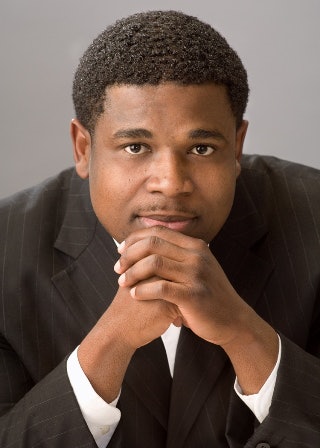 Matthew Lynch
Matthew LynchIt is not unusual for colleges and universities to have aggressive diversity recruitment programs in place when it comes to students and faculty. After all, a blanket priority for schools is to have student and faculty populations that are as varied as possible.
Pardon my cynicism here, but who exactly do these recruitment programs really benefit? Successful recruitment in this regard creates a visual diversity that looks good on college brochures and websites, but it is only skin-deep. A recent episode of Modern Family referenced this visual diversity when oldest Dunphy daughter Haley made the following observation about a community college mailer she received:
“At least this one doesn’t have that fakie lunchtime shot of the Black guy, Asian girl and an Indian … oh, wait; there it is! Wow; that wheelchair kid is really cracking everybody up.”
It got a laugh from me and millions of other viewers who have seen this all too often in college recruitment. If a school can convince potential students that there are others already there, just like them, then enrollment numbers rise—along with revenue. While that may improve bottom line and freshman diversity, long-term retention and student success programs are often not considered. Who is on hand to give these marginalized, trophy students support when the reality of college demands sets in?
Not Just Students
While diversity of the student population gets a lot of press, this is not the only group universities target for variety. Increasingly, colleges are seeking out minority faculty members that fit certain criteria and are meant to dispel the myth that professors are usually “old, white guys.” It’s a slow go, however. While 30 percent of the undergraduate population is considered minority students, only 12 percent of faculty are in the minority category.
For minority faculty numbers to rise, schools need to make sure they are creating welcoming environments that encourage success. The sad truth is that many minority faculty members did not have many, if any, professors or instructors “like them” when they were earning their degrees and so they are blazing their own trails when it comes to their ethnicity, race and position of authority. It is not enough for schools to recruit diverse talent; they must cultivate those skills to retain those faculty members long term.
Schools Doing it Right
An example of a college with strong recruitment and follow-up when it comes to diversity is the State University of New York at Stony Brook. The school graduates 70 percent of its black student population and 65 percent of Latino students. These are not just lucky numbers, but are the result of a concentrated program called the Educational Opportunity Program.
Designed to target first-generation, low-income college students, EOP includes mandatory study hours and meetings with academic success counselors. Instead of leaving students to their own devices, the program assumes students need that extra encouragement for success.
Other colleges are on board with this idea of hands-on guidance as well. The North Carolina Community College Minority Male Mentoring Program incorporates networking and developmental courses to improve retention and ultimately graduation rates for minorities. The University of Florida has a medical school minority mentoring program designed to connect students and health professionals. The University of Alabama in Huntsville has a freshman minority mentorship initiative that requires mentors to meet at least once each month with their students.
Programs like these provide a bridge between diverse student recruitment and minority retention and graduation. They go beneath the appearance of a student population to address the real people involved. With more of a push in this mentorship direction, more minority students will graduate workplace-ready and less will become collateral damage in university diversity initiatives.
Dr. Matthew Lynch is a department chair and an associate professor of education at Langston University. He has focused his career on researching topics related to educational policy, school leadership and education reform, particularly in the urban learning environment.





















